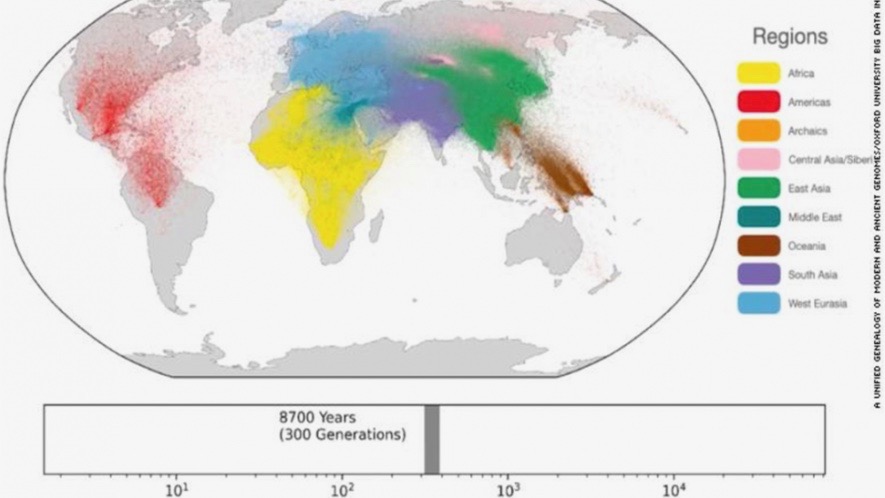With the advent of a new era of molecular biology, especially genetics, the past decades have witnessed incredible development in deciphering enormous amounts of species’ genetic architecture. Human genetic make-up, including of people from both the past and the current era, has also been revealed. DNA, which is the genetic material that humans possess and has the information of the species, can now be sequenced regularly. In this process, we have enormous genetic information about ourselves today.
While genetic information is crucial in numerous medical treatment paradigms, they are also used to reveal family trees, which, in other words, goes back to trace the family history of individuals. What about constructing a family tree of the entire humanity? Is it possible or simply a dream? The obvious purpose that this kind of exercise would fulfill is to find out who is related to whom and who has migrated from where and when.
A study published in Science on February 25 hopes to make it a reality. Researchers have used genetics and created the largest ever family tree, making it possible to find out the distant ancestors and where they lived along with their relationship with those alive today.
The study was conducted by a team from the Big Data Institute of Oxford University. The team of researchers combined a variety of human genomes from various sources, including from both ancient and modern people. It is worth mentioning at this point is that the genome roughly signifies the complete set of genes of an individual and thus is their genetic signature. The genes are the DNA molecule segments with the code (instruction) for making proteins.
Wilder Wohns, the lead author of the study, said,“Just as a family tree shows how an individual is related to their parents or siblings, genetic genealogy reveals which genes are shared between two individuals. It can show which points in the human genome individuals share genes and differ.”
“Simply put, what we did was we created the largest human family tree ever. We have a single genealogy that traces the ancestry of all of humanity and shows how we’re all related to each other today,” he added.
The resource implies that whoever has access to their own genetic information can now figure out how they have carried specific genes and when their ancestors moved to a particular place. In the words of Wohns, it is like reading the entire story of human history written in the genes.
The researchers clubbed the data of gene sequences of 3,609 people belonging to 215 populations. Notably, some of the genes date back to 1,00,000 years ago. They used several databases that store the gene sequences. The team developed an algorithm to integrate ancient and modern genetic data by combining the genome sequences. “That was one of our biggest innovations,” Wohns commented. This allowed them to build the structure of what they described as a “human gene genealogy,” which has been discussed theoretically for around 30 years.
The study only confirmed the understanding that most human evolution took place in Africa. Almost 70,000 years ago, a large movement out of the continent took place. Eventually, modern humans reached every nook and corner of the world. However, the data also hints towards potentially unknown migrations in the past. “There is some evidence that human ancestors were in North America earlier than previously thought, although further research would be needed to reveal unknown migrations,” Wohns said, giving an example of the unknown migrations.
However, the method developed in the study can also apply to other species like orangutans or even bacteria, and it could also be beneficial in medical sciences, according to experts.





